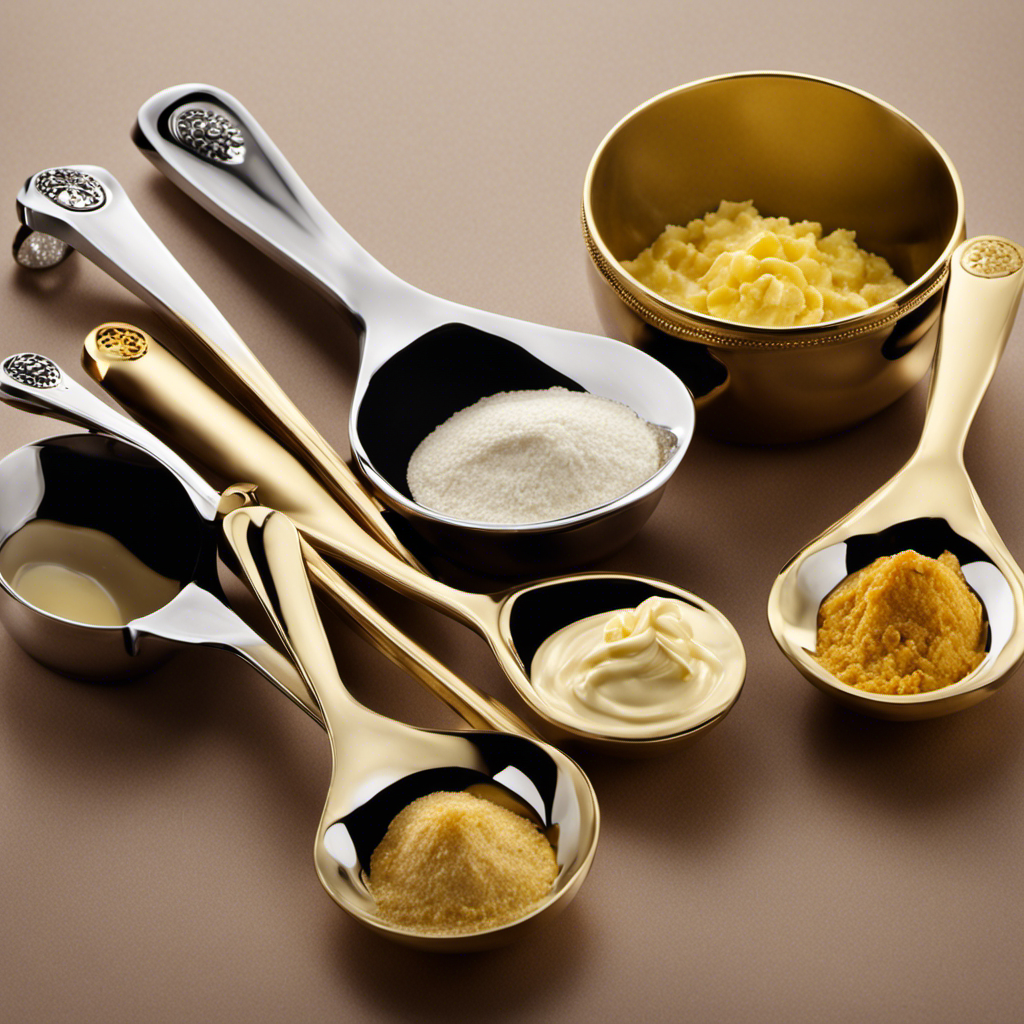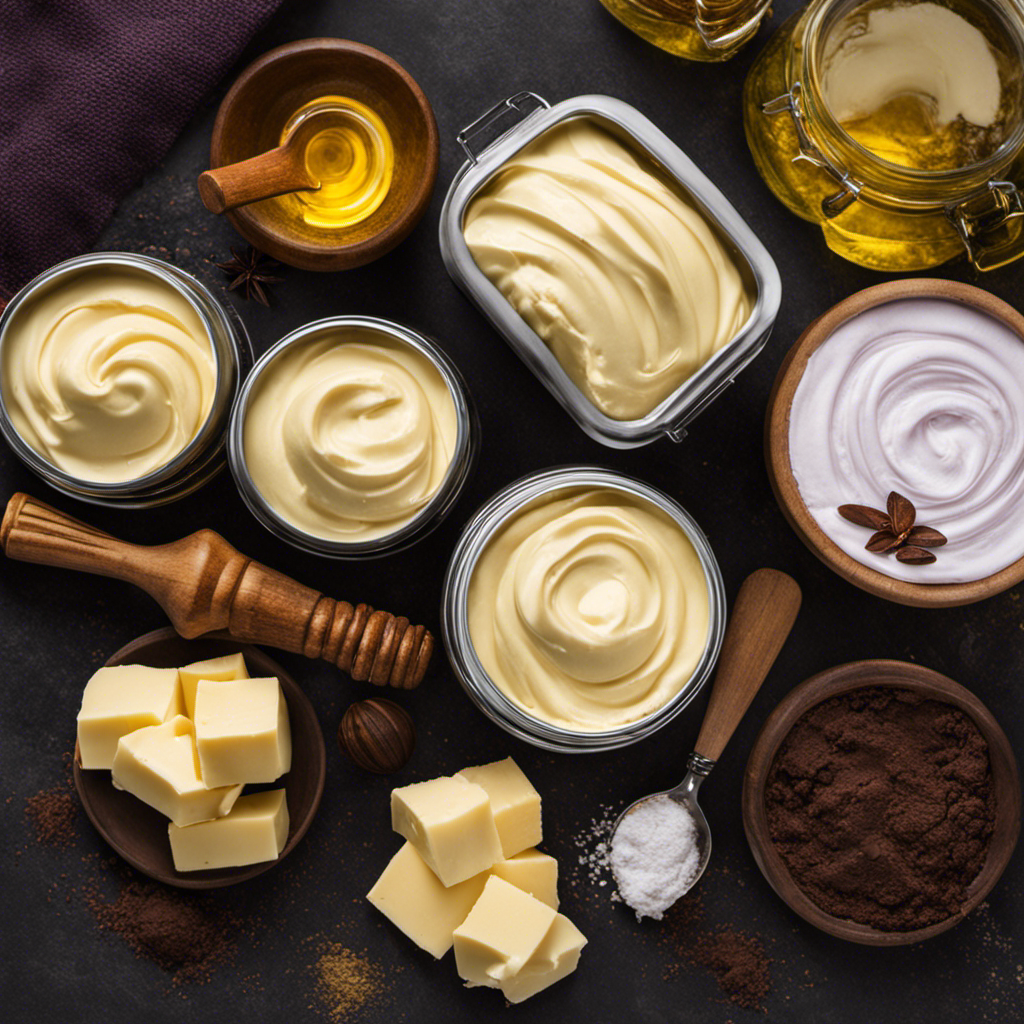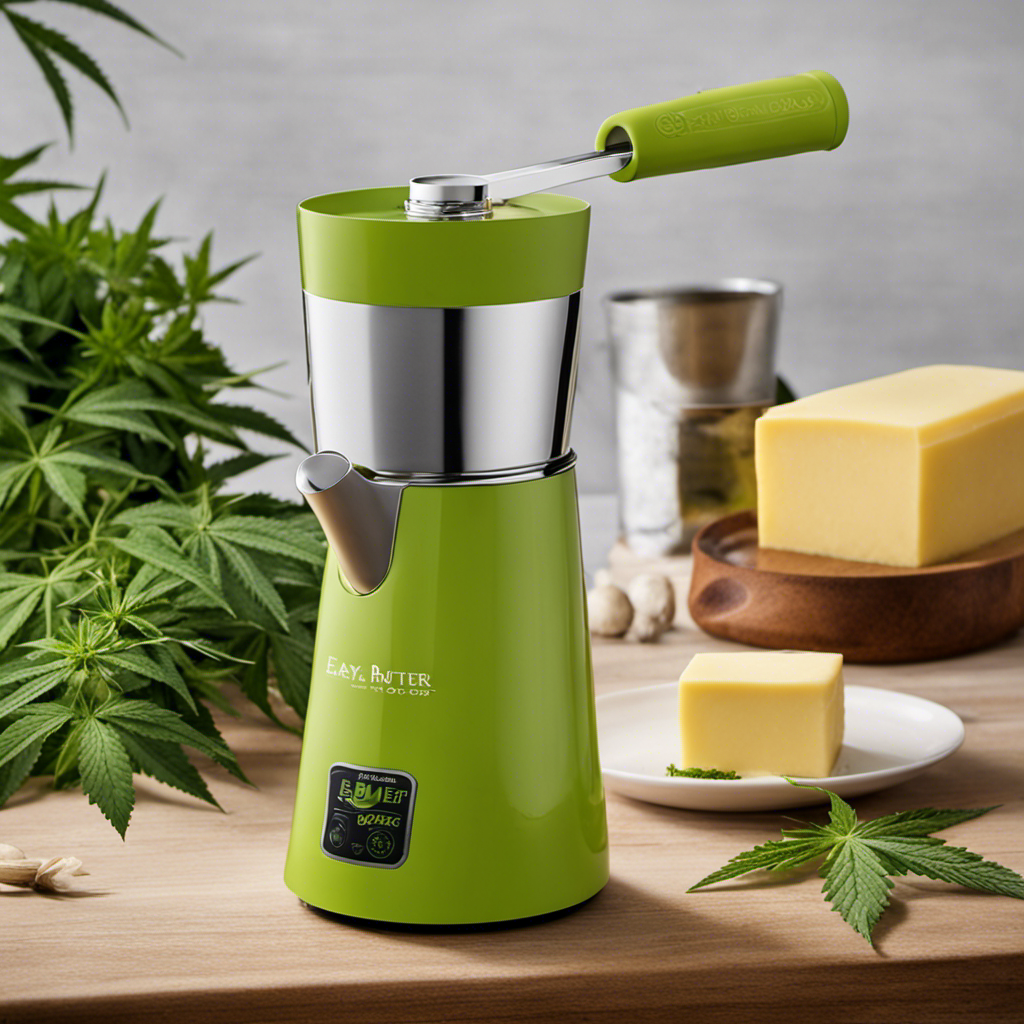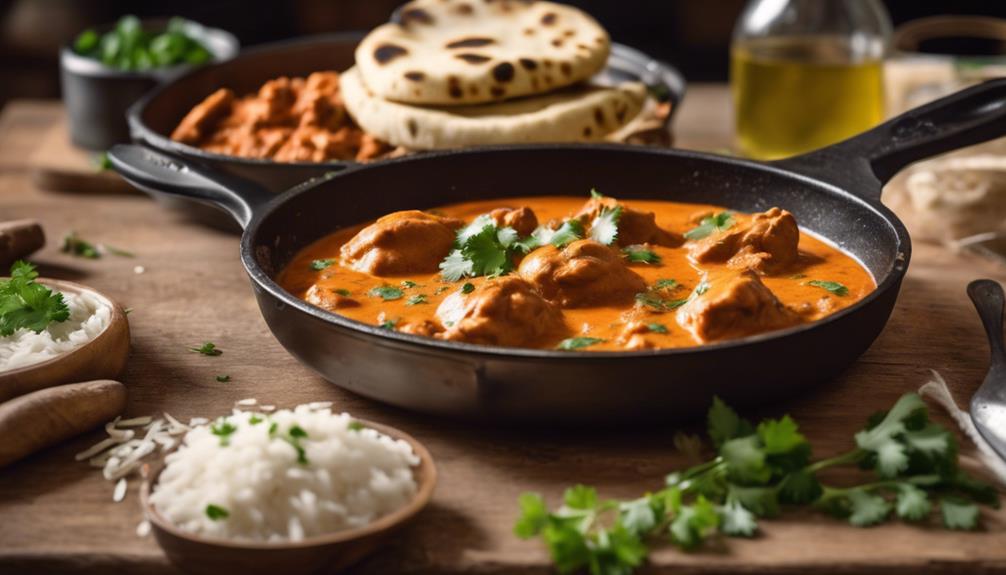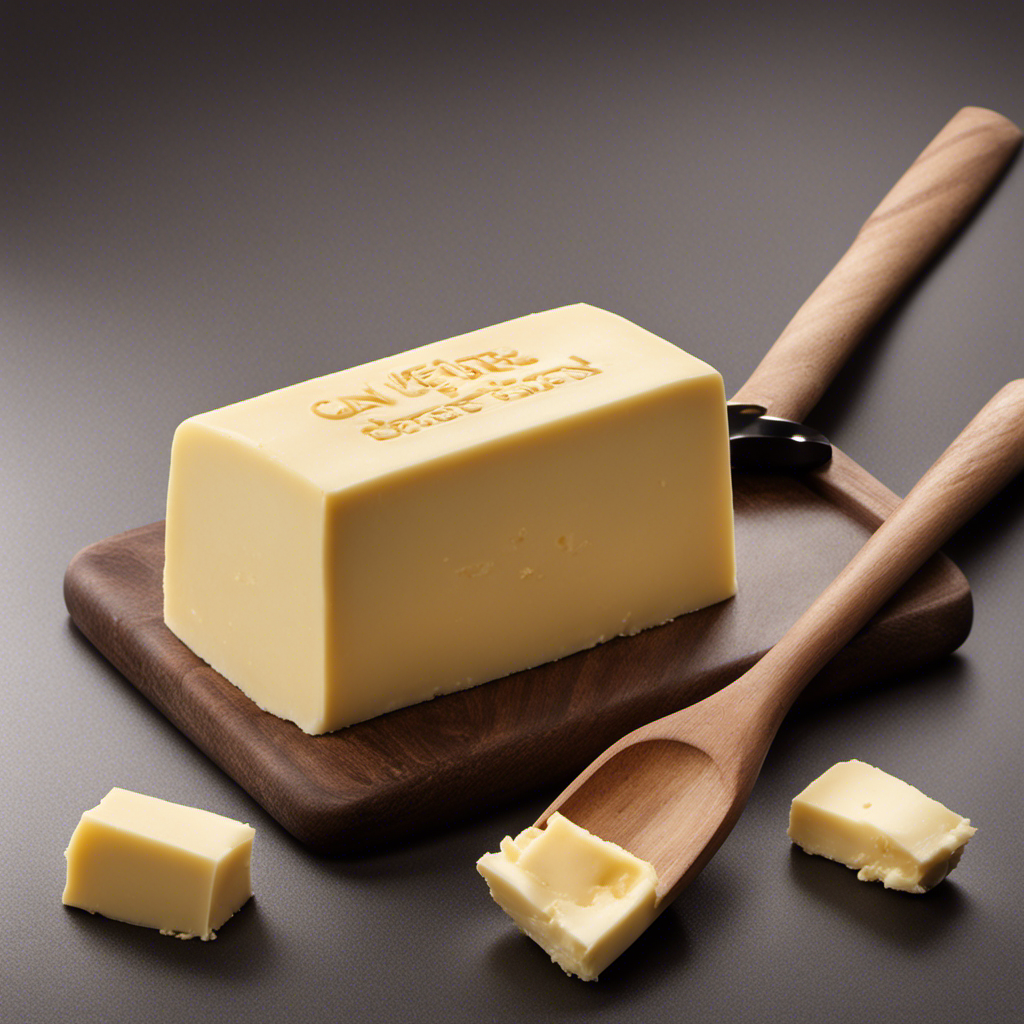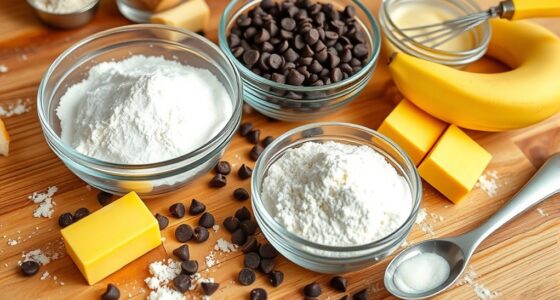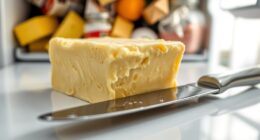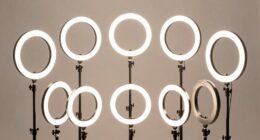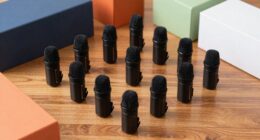Do you struggle with figuring out the right amount of butter to use in your recipes? Search no more! This article has the solution to your buttery problem: the conversion of tablespoons of butter to cups.
Get ready to unlock the secrets of butter measurements and become a master in the kitchen. You’ll be amazed at how a simple conversion chart and a little understanding can take your cooking skills to a whole new level.
So, let’s dive in and discover the science behind butter measurements together!
Key Takeaways
- Accurate measurement is crucial for precise results in baking and cooking.
- Using a kitchen scale provides the most precise measurement for butter.
- Measuring cups with tablespoon markings are a convenient alternative to scales.
- Specialized butter measuring tools ensure consistent and accurate measurement.
Butter Conversion Chart
To convert tablespoons of butter to cups, you’ll need to know that there are 16 tablespoons in a cup. This information is essential when it comes to converting butter measurements in recipes.
Butter conversion ratios are commonly used in cooking and baking, as many recipes require precise measurements. By understanding the conversion from tablespoons to cups, you can easily adjust the amount of butter needed for a specific recipe.
Knowing this ratio is particularly helpful when scaling a recipe up or down. It allows you to accurately measure and add the right amount of butter, ensuring that your dish turns out delicious and perfectly balanced.
Understanding Butter Measurements
Understanding the measurements of butter can be tricky. But fear not, with a few simple tips, you’ll be able to measure butter accurately and make delicious recipes without any confusion. Here are some key points to keep in mind:
-
Stick to Tablespoons: When a recipe calls for butter in tablespoons, it’s important to know that 1 stick of butter is equal to 8 tablespoons.
-
Cup Conversion: If a recipe calls for butter in cups, remember that 1 cup is equal to 2 sticks or 16 tablespoons of butter.
-
Common Butter Substitutions: If you’re out of butter, don’t worry! You can use alternative ingredients like margarine, coconut oil, or vegetable shortening in equal amounts.
-
Weighing Butter: For the most accurate measurement, use a kitchen scale to weigh butter. 1 stick of butter typically weighs around 113 grams or 4 ounces.
Converting Cups to Tablespoons
If you’re looking to convert cups to tablespoons, understanding equivalent tablespoon measurements can be a useful skill. Knowing how many tablespoons are in a cup can help you quickly and accurately convert recipes or measurements.
In this discussion, we’ll explore some quick conversion tips and tricks to make your cooking and baking endeavors a breeze.
Equivalent Tablespoon Measurements
Did you know that there are sixteen tablespoons in a cup? When it comes to baking, measuring butter accurately is crucial for the success of your recipe. Here are some handy equivalent tablespoon measurements to help you out:
- 1/2 cup of butter is equal to 8 tablespoons.
- 1/4 cup of butter is equal to 4 tablespoons.
- 1/3 cup of butter is equal to 5 1/3 tablespoons.
- 1/8 cup of butter is equal to 2 tablespoons.
Now that you know the tablespoon equivalents, you can easily substitute butter in your recipes or measure it accurately. But what if you need to convert other measurements as well? Don’t worry, we’ve got you covered. Read on for some quick conversion tips to make your baking experience a breeze.
Quick Conversion Tips?
To make your baking experience a breeze, remember that 1 teaspoon is equal to 1/3 tablespoon. When it comes to kitchen measurements, having some conversion shortcuts up your sleeve can save you time and effort.
One common mistake is not knowing the equivalents. For example, did you know that 1 cup is equal to 16 tablespoons? Knowing this can come in handy when you need to convert a recipe.
Another mistake is not being precise with your measurements. Using a kitchen scale can help ensure accuracy. Additionally, using the correct measuring tools, like a liquid measuring cup for liquids and a dry measuring cup for dry ingredients, can prevent errors.
Tablespoons of Butter in a Cup: The Breakdown
In this discussion, you’ll learn about butter conversion ratios. This will help you accurately measure the amount of butter you need for your recipe.
You’ll also discover some measuring accuracy tips to ensure your conversions are precise.
Additionally, we’ll cover common recipe conversions involving butter. This will provide you with the knowledge to adapt recipes to suit your needs.
Butter Conversion Ratios
You can easily convert tablespoons of butter to cups by multiplying the number of tablespoons by 0.0625. Here are four quick and easy conversions to help you with your butter measurement equivalents:
- 1 tablespoon of butter is equal to 0.0625 cups.
- 2 tablespoons of butter is equal to 0.125 cups.
- 3 tablespoons of butter is equal to 0.1875 cups.
- 4 tablespoons of butter is equal to 0.25 cups.
Converting butter measurements can be a simple task when you know the conversion ratio. By multiplying the number of tablespoons by 0.0625, you can quickly determine the equivalent amount in cups.
Now that you have a grasp on butter conversion ratios, let’s move on to some tips for measuring accuracy.
Measuring Accuracy Tips
When measuring ingredients, it’s important to use the correct measuring tools for accuracy. Whether you’re baking or cooking, using the right measuring techniques can make a big difference in the outcome of your dish.
One common mistake is using measuring cups for dry ingredients when they should be used for liquid ingredients. Dry measuring cups are designed to be filled to the top and leveled off, while liquid measuring cups have a spout for easy pouring.
Another mistake is not properly leveling off ingredients like flour or sugar, which can lead to inaccurate measurements. To ensure accuracy, use a straight-edged utensil, such as a knife or spatula, to level off the top of the ingredient.
By following these tips, you can achieve precise measurements in your recipes.
Speaking of measurements, let’s now discuss common recipe conversions.
Common Recipe Conversions
To accurately convert recipes, it’s helpful to know the ratios between different measurement units. When it comes to recipe measurement conversions, converting butter measurements can be quite useful. Here are four common conversions to keep in mind:
- 1 cup of butter is equal to 16 tablespoons.
- 1 tablespoon of butter is equal to 0.0625 cups.
- 1 stick of butter is equal to half a cup or 8 tablespoons.
- 1 pound of butter is equal to 2 cups or 32 tablespoons.
Knowing these conversions can save you from using the wrong amount of butter in your recipes. Whether you need to increase or decrease the amount, having a clear understanding of these ratios will help you achieve the desired results.
The Science Behind Butter Measurements
Understanding the science behind butter measurements can help you convert tablespoons to cups with precision. When it comes to butter measurement equivalents, it’s important to know that 1 cup of butter is equal to 16 tablespoons. This means that if a recipe calls for 1/2 cup of butter, you would need 8 tablespoons.
The precision in measuring butter is crucial for achieving the desired texture and flavor in your dishes. Butter is typically sold in sticks or blocks, each containing tablespoon markings on the packaging. By using these markings, you can easily measure the exact amount of butter needed for your recipe.
Tips for Accurately Measuring Butter
One way to accurately measure butter is by using the markings on the packaging. Here are some tips to help you measure butter accurately:
-
Use a kitchen scale: Weighing butter is the most precise way to measure it. Convert the weight to tablespoons using a conversion chart.
-
Use measuring cups: If you don’t have a kitchen scale, use measuring cups with markings for tablespoons. Fill the cup with butter and level it off with a knife.
-
Use a tablespoon measure: A tablespoon measure can be handy for measuring smaller amounts of butter. Simply scoop out the required amount.
-
Use butter measuring tools: Specialized butter measuring tools, such as butter molds or sticks with markings, can also help you accurately measure butter.
Conclusion
Congratulations! Now you know how to convert cups to tablespoons and the science behind it.
But wait, there’s more! To ensure accurate measurements, remember to use a measuring cup and level off the butter.
Don’t forget, different types of butter may have slightly different measurements.
So, next time you’re in the kitchen, confidently measure your butter like a pro.
Happy cooking!
